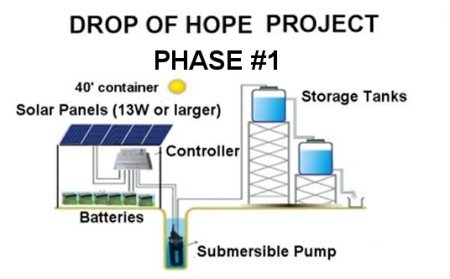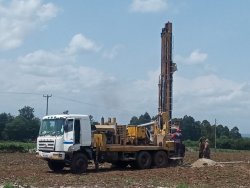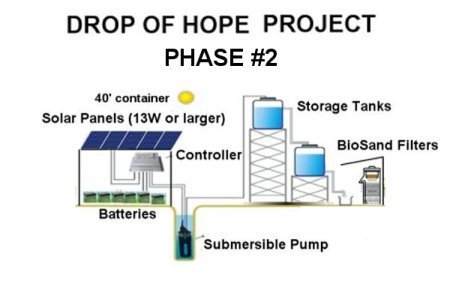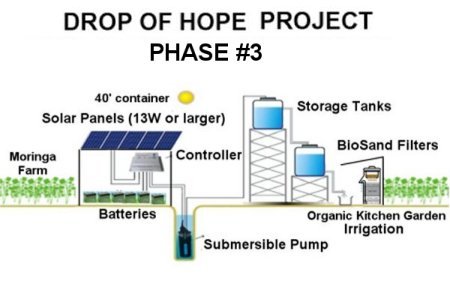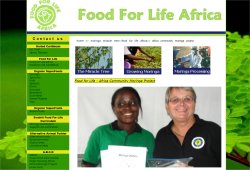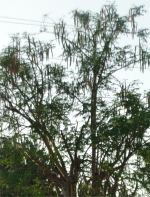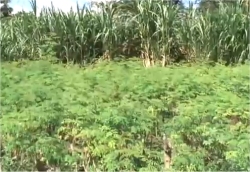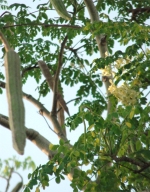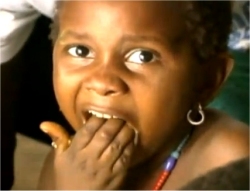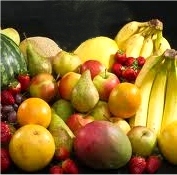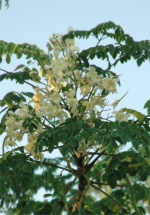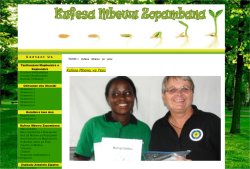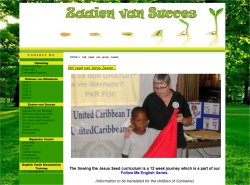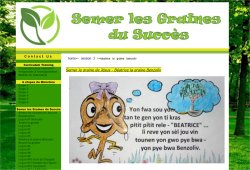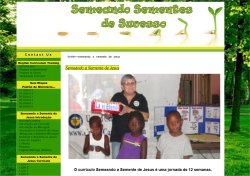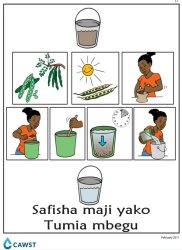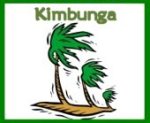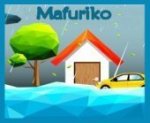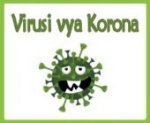|
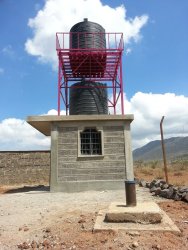
|
Tanks:
Solar only produces water when it is sunny or bright. To match supply to demand, it is usual to add water tanks. In this case, 2 tanks were added, both 5000L each. The top tank is used to gravity feed water to the school and the bottom tank supplies water to the community taps. If both tanks are empty, it will take about 1 day of sunlight to fill them. |
Solar panels and controller.
Investment into a 40 ' Energy Container for uninterrupted off-grid power supply
intechcleanenergy.com
The Intech Energy Containers is a solution to deliver energy to rural areas. Each container is equipped with a photovoltaic system and a lithium-ion battery backup. Every system comprises a monitoring system which allows the customers but also Intech īs engineers to access the data online. |
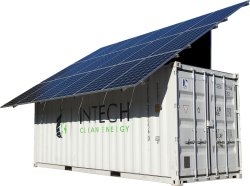
|
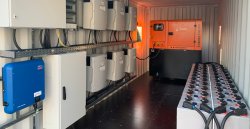
|
All Intech Energy Containers are pre- assembled, pre-tested and pre-configured before shipment which ensures a fast and cost-efficient implementation.This will not only power the pump but provide a flood light sports playing field in Phase #3 |
Information sourced from www.osiligi.org
Kichujio cha Mchanga wa Kibaolojia (KMK)
Utangulizi
Embedded Microsoft Office presentation, powered by Office.
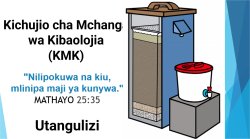
|
Hiari: PAKUA 'Utangulizi' PowerPoint |
The Kichujio cha Mchanga wa Kibaolojia (KMK) is a household water filter that makes dirty water safe to drink. This particular type of filter is an adaptation of the traditional slow sand filter, which has been used for community water treatment for almost 200 years.
The KMK is smaller and adapted for intermittent use, making it most suitable for households, typically around five people. In the case of a school it should serve 10 to 15 children for their time at school.
A bank of KMK's would need to be installed to serve the children's needs |
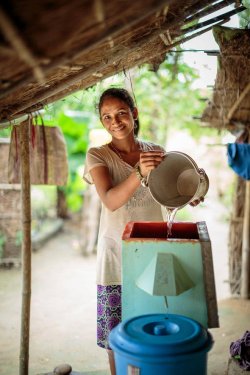
|
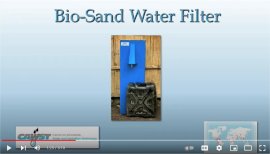
|
Optional: Download English Introduction to the BioSand Filter video
Part of the project will be to establish a BioSand Production Site as part of our Agro Glamping Resort |
Sanidi 'Tovuti ya Uzalishaji
Embedded Microsoft Office presentation, powered by Office.
|
Hiari: PAKUA Sanidi 'Tovuti ya Uzalishaji' PowerPoint | 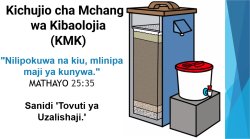
|
|
Optional: Download BioSand Filter PowerPoint - Set Up a Production Site |
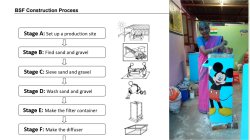
|
KITCHEN GARDEN PROGRAM
An organic kitchen garden will be established behind the BSF shed, catchment water from the roof can be used to irrigate the garden.
|
The Kitchen Garden Program is a fun, hands-on learning program delivering pleasurable food education.
This program can be integrated into the many schools in East Africa.
|

|
With strong curriculum integration and a focus on student wellbeing, collaboration and leadership, students learn to grow, harvest, prepare and share fresh, seasonal, delicious food - forming positive food habits for life.
www.kitchengardenfoundation.org.au

|
This will be a conduit to enable us to introduce our 'Grow and Go' (English Version) Children's Curriculum in their local dialect. Teaching the children how plants grow and what they need for good natural growth - which includes light and water. |
Including introducing the BioSand Filter and educating them on the use and maintenance in a fun way that is suitable for the children's level of education.
Enabling us to also introduce them to the 'Living Water' and the
'Light of the World'
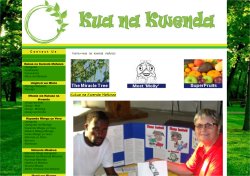
| This 20 Session educational and empowering children's curriculum has already been translated into SWAHILI for Tanzania, Kenya, Uganda, Rwanda, Burundi, South Sudan, Mozambique, Malawi and Zambia. |
An English version with CHICHEWA visual aids has been created, awaiting translation for the children of Malawi. |
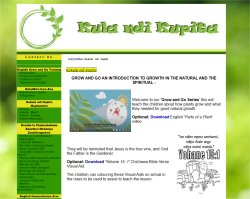
|

|
We are working on the PORTUGUESE version, all visual aides have already been translated for the children of Mozambique and for the children of Brazil and Venezuela |
As well as in FRENCH the official language in Burundi, Cameroon, the Central African Republic, Chad, the Democratic Republic of Congo within Africa but also in Haiti, where Haitian Creole visual aids and videos have been created for the Haitian children. |
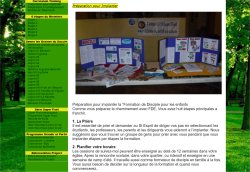
|
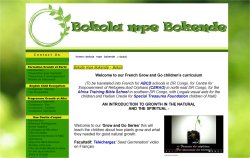
|
There is a French version awaiting translation with LINGALA visual aids for the children of the Central African Republic and the DR Congo refugees in Uganda |
An English version with NUER visual aids has been created for the children of South Sudan and refugees in Uganda |
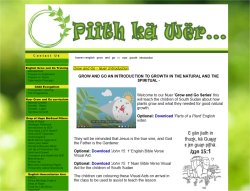
|
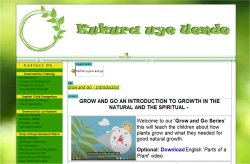
| An English version with SHONA visual aids has been created for the children of Zimbabwi. |
The DUTCH visual aids have been completed awaiting translation for use in Suriname and in the future in places like
Aruba, Curaçao and St Maarten. |

|
|
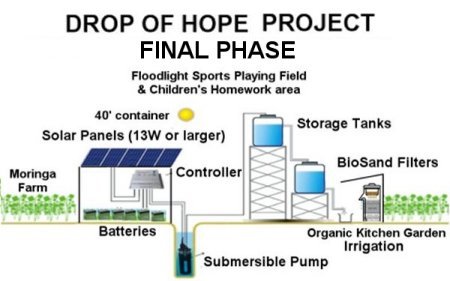
|
ESTABLISHING A MORINGA FARM
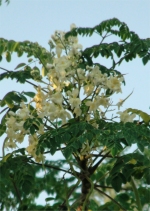 |
For centuries, the natives of northern India have known of the many benefits of Moringa oleifera. Its uses are as unique as the names it is known by, such as Horseradish tree and Drumstick tree (referring to the large drumstick shaped pods) and in East Africa it is called "Mother's best friend”. In Haiti it is referred to as Biolive (due to the oil extracted from the seeds)
|
In Africa Moringa trees have been used to combat malnutrition, especially among infants and nursing mothers. We hope to introduce Commercial Moringa cultivation as part of our Agro Glamping Resorts
|
Three non-governmental organizations in particular - Trees for Life, Church World Service and Educational Concerns for Hunger Organization - advocate Moringa as “natural nutrition for the tropics.” |
|
 |
Leaves can be eaten fresh, cooked, or stored as dried powder for many months without refrigeration, and without loss of nutritional value. Moringa is especially promising as a food source in the tropics because the tree is in full leaf at the end of the dry season when other foods are typically scarce.
|
| Analyses of the leaf composition have revealed them to have significant quantities of vitamins A, B and C, calcium, iron and protein. According to Optima of Africa, Ltd., a group that has been working with the tree in Tanzania, "25 grams daily of Moringa Leaf Powder will give a child" the following recommended daily allowances: |
|
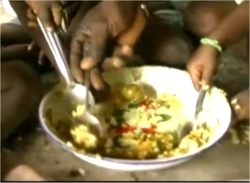 |
-
Protein 42%,
-
Calcium 125%,
-
Magnesium 61%,
-
Potassium 41%,
-
Iron 71%,
-
Vitamin A 272%,
-
Vitamin C 22%.
|
These numbers are particularly astounding; considering this nutrition is available when other food sources may be scarce.
Scientific research confirms that these humble leaves are a powerhouse of nutritional value.
Gram for gram, Moringa leaves contain:
- SEVEN times the vitamin C in oranges,
- FOUR times the Calcium in milk,
- FOUR times the vitamin A in carrots,
- TWO times the protein in milk
- THREE times the Potassium in bananas.
|
|
The Moringa tree has great use medicinally both as preventative and treatment. Much of the evidence is anecdotal as there has been little actual scientific research done to support these claims. India's ancient tradition of ayurveda says the leaves of the Moringa tree prevent 300 diseases. One area in which there has been significant scientific research is the reported antibiotic activity of this tree.
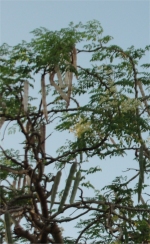 |
The immature pods are greatly valued and widely used. The pods are extremely nutritious, containing all the essential amino acids along with many vitamins and other nutrients. The immature pod can be eaten raw or prepared like green peas or green beans, while the mature pods are usually fried and possess a peanut-like flavor.
|
|
|
The pods also yield 38 - 40% of non-drying, edible oil known as Ben Oil. This oil is clear, sweet and odorless, and never becomes rancid. Overall, its nutritional value most closely resembles olive oil. |
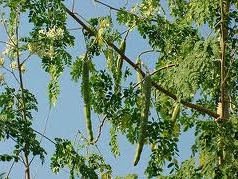
|
The leaves are eaten as greens, in salads, in vegetable curries, as pickles and for seasoning. They can be dried and pounded and sprinkled over food or added to milk. Leaves and young branches are relished by livestock. In developing tropical countries.
|
Moringa trees have been used to combat malnutrition, especially among infants and nursing mothers.
SOWING SEEDS OF SUCCESS CHILDREN'S CURRICULUM
|
A Swahili version has been translated for the children of Tanzania, and East Africa. |
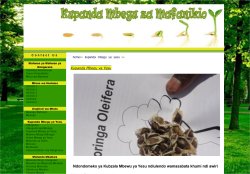
|
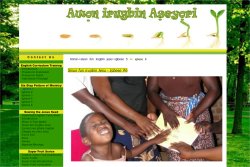
|
A Yoruba version is in need of translation for the children of Nigeria. All visual aids and Bible Verses have been completed. |
|
Most recently a Turkish ' Sowing Seeds of Success' Moringa children's curriculum has been started with all visual aids complete now waiting to be translated into Turkish for the children of Turkey |

|
Learn more about the uses of Moringa including water purification.
'Safisha maji yakoTumia mbegu'
Hiari: Pakua bango 'Safisha maji yako
Tumia mbegu' ili kusaidia kufundisha.
Hiari: Pakua 'Safisha maji yako
Tumia mbegu' Kitini cha Elimu cha Kiingereza kwa ajili ya wazazi au mlezi.
Hiari: Pakua 'Safisha maji yako Tumia mbegu' Kitini cha Elimu cha ajili ya wazazi au mlezi.
|
|
Safisha Maji Yako - Tumia Mbegu
Ujumbe Muhimu: Mbegu tofauti zinaweza kutumika kusaidia kuondoa mashapo kwenye maji yako.
Maswali Yanayowezekana:
• Je, umewahi kutumia mbegu kuweka mchanga wa maji yako?
• Kama ndiyo, je, kwa kawaida wewe hutumiaje mbegu?
Maudhui:
Hatua ya kwanza katika kutibu maji yako ni kufanya sedimentation. Maji yetu yanapokuwa machafu tunahitaji kuyatia mashapo. Vijiumbe maradhi hupenda kushikamana na mashapo, kwa hivyo kwa kuondoa mashapo tunaondoa vijidudu.
|
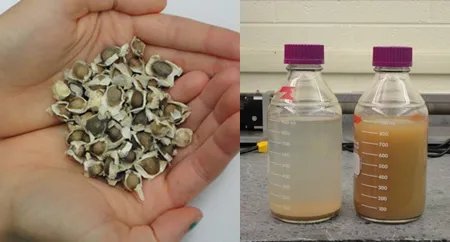
|
Tunaweza kumwaga maji kwa kutumia mbegu. Mbegu tofauti hutumiwa katika nchi tofauti na mikoa. Baadhi ya mbegu zinazoweza kutumika kwa mchanga ni: Maharage ya Fava (Amerika ya Kusini), Moringa (Afrika, Karibiani na sehemu za Asia) |
Kuna njia tofauti ambazo watu hutumia mbegu kuweka mchanga wa maji yao. Eleza jinsi ya kutumia mbegu zinazopatikana katika eneo lako.
Njia moja ni kufanya hatua zifuatazo:
• Acha mbegu zikauke kwenye jua
• Saga baadhi ya mbegu
• Ongeza kiganja cha mbegu zilizosagwa kwenye ndoo ya maji machafu
• Koroga maji kwa kijiko au kijiti kwa dakika chache
• Iache itulie kwa saa kadhaa
• Mimina maji safi kwenye chombo safi cha kuhifadhi
Mbegu zitaachwa chini ya ndoo. Wanapaswa kutupwa nje na takataka zingine za nyumbani.
Kwa kutumia mchanga, tunasaidia kupata maji bora. Bado tunahitaji kuchuja na kuua maji yetu baada ya kutumia mbegu.
Angalia Uelewa:
• Kwa nini ungependa kutumia mbegu?
• Je, unaweza kutumiaje mbegu kuweka mchanga wa maji yako?
• Je, maji ni salama kunywa baada ya mchanga?
Pongezi za rasilimali CAWST
SOWING SEEDS OF SUCCESS - MORINGA CURRICULUM
Kuponya Moyo Ulio Vunjika - Janga la Asili
Kuponya Moyo Ulio Vunjika
KUPONYA MOYO ULIO VUNJIKA - MGOGORO WA CORONA
|


